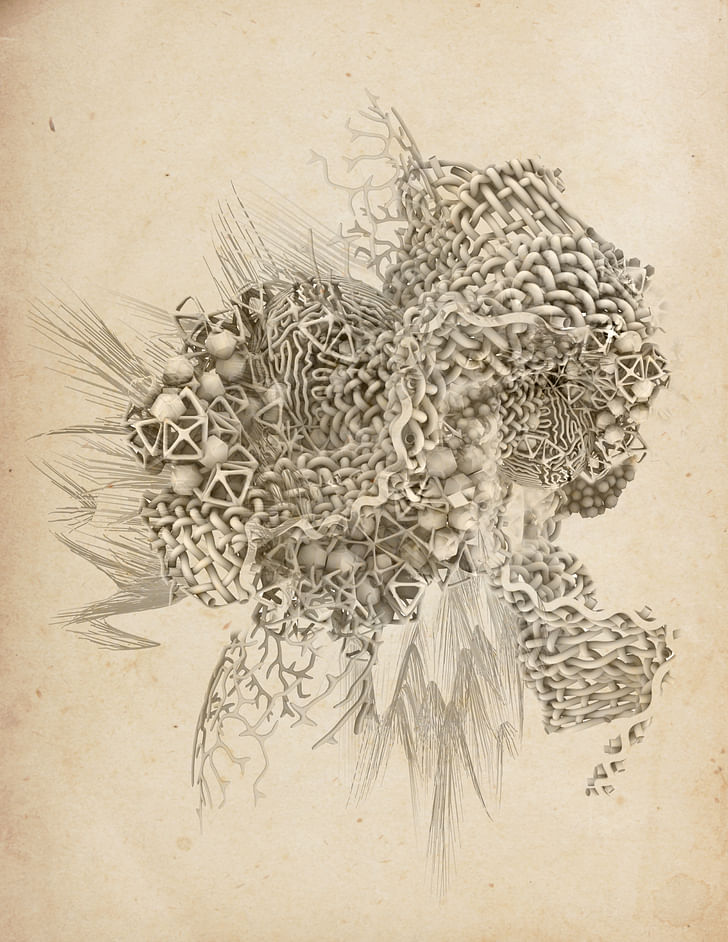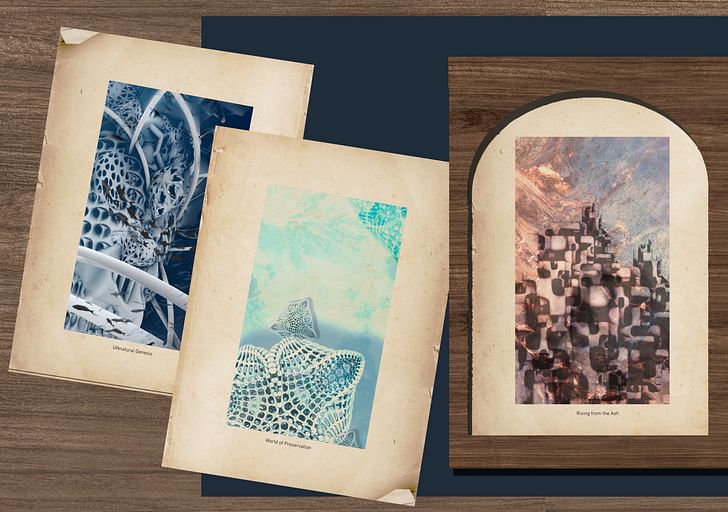

M.Arch graduate Mariam Malaty of the University of Toronto John H. Daniels Faculty of Architecture, Landscape, and Design used the figurative and literal forms of grottoes to explore formal concepts in pursuit of "fantastical design" possibilities. In her thesis, The Grotto of Illusive Forms, Malaty explains, "these propositions are an open exploration of form found within the spectrum of the 'familiar' and the 'unfamiliar.'” The result, Malaty tells Archinect, "is the creation of four grottoes, each the venue and the result of three acts of colonization."
Archinect connected with Malaty to learn about her thesis, the process for creating the "digital artifacts" that make up her project, and how she has applied the skills she learned in architecture school to her family's residential and hotel business.
Archinect's Spotlight on 2020 Thesis Projects: 2020 has been an extraordinarily challenging year for architecture graduates. Students were displaced as schools shut down, academic communities had to adapt to a new virtual format, end-of-year celebrations were canceled or changed dramatically, and now these students are graduating into an extremely challenging employment market. To support the 2020 class we're launching a summer series of features highlighting the work of thesis students during this unique time of remote learning amid COVID-19. Be sure to follow our 2020 thesis tag to stay up to date as we release new project highlights.


This thesis uses an interpretation of “grotto” as a framework wherein the “idea of nature” flirts with and merges with the “idea of the synthetic,” with the objective of creating a range of fantastical design propositions.
Briefly describe your thesis.
“There are two sorts of grottoes: the ones are work from Nature, others works of Art: and as Art never makes something more beautiful than when it imitates nature well: so nature never produces something rarer than when Art puts its hand on it.” -A. Félibien
This thesis uses an interpretation of “grotto” as a framework wherein the “idea of nature” flirts with and merges with the “idea of the synthetic,” with the objective of creating a range of fantastical design propositions. These propositions are an open exploration of form found within the spectrum of the “familiar” and the “unfamiliar.” The result is the creation of four grottoes, each the venue and the result of three acts of colonization. In a traditional or mythical sense, Grotto can be seen as the origin of architecture made from the merging of natural elements such as water, vegetation, and biological organisms, with synthetic operations with an agenda to control those processes. Each grotto concentrates on a different operation and its trajectory.
How did your project change as studios transitioned to remote learning?
A major part of the project was supposed to be physical models that are the result of different materials working together to form biomimetic shapes that are actually synthetic. More intricate physical models were also supposed to be 3D printed. Since the studio became virtual, the aspect of touching and seeing the models up close cannot be achieved. I had to find a way to document the models as artifacts displayed digitally as part of an open book that was placed and documented in a particular way.
Since the studio became virtual, the aspect of touching and seeing the models up close cannot be achieved. I had to find a way to document the models as artifacts displayed digitally as part of an open book that was placed and documented in a particular way.
Any tips for students as they continue to work on their thesis?
Since everything is now being posted online and the portfolios are viewed virtually, I would recommend that student become creative with ways the display their work online and experiment with new forms of media, such as videos, to represent their ideas.
As a recent graduate experiencing the direct effects of the pandemic, how do you feel about the architecture industry right now?
There is no doubt that the pandemic has affected all industries, but I believe the architecture industry had been noticeably affected by having their projects stopped and postponed due to restrictions set by the government. However, I also believe that most architecture projects had their budgets set before the pandemic, so they shouldn't have an issue completing the project during this financial crisis. After the pandemic, architectural design is likely going to accommodate for social distancing measures should a crisis like this happen again.
I have been very excited about graduating and applying my master’s studies in the professional field. For now, I have returned to my hometown to develop and empower my family business, which develops residential housing and hotels.
What are your next steps as a recent grad?
I have been very excited about graduating and applying my master’s studies in the professional field. For now, I have returned to my hometown to build upon and empower my family business, which develops residential housing and hotels. I am currently leading the development and innovation at our company and I am looking forward to bring in new ideas and inspirations from my studies in architecture school.
Katherine is an LA-based writer and editor. She was Archinect's former Editorial Manager and Advertising Manager from 2018 – January 2024. During her time at Archinect, she's conducted and written 100+ interviews and specialty features with architects, designers, academics, and industry ...
2 Comments
amazing work and you did "grotto" right!
nice work..
Block this user
Are you sure you want to block this user and hide all related comments throughout the site?
Archinect
This is your first comment on Archinect. Your comment will be visible once approved.